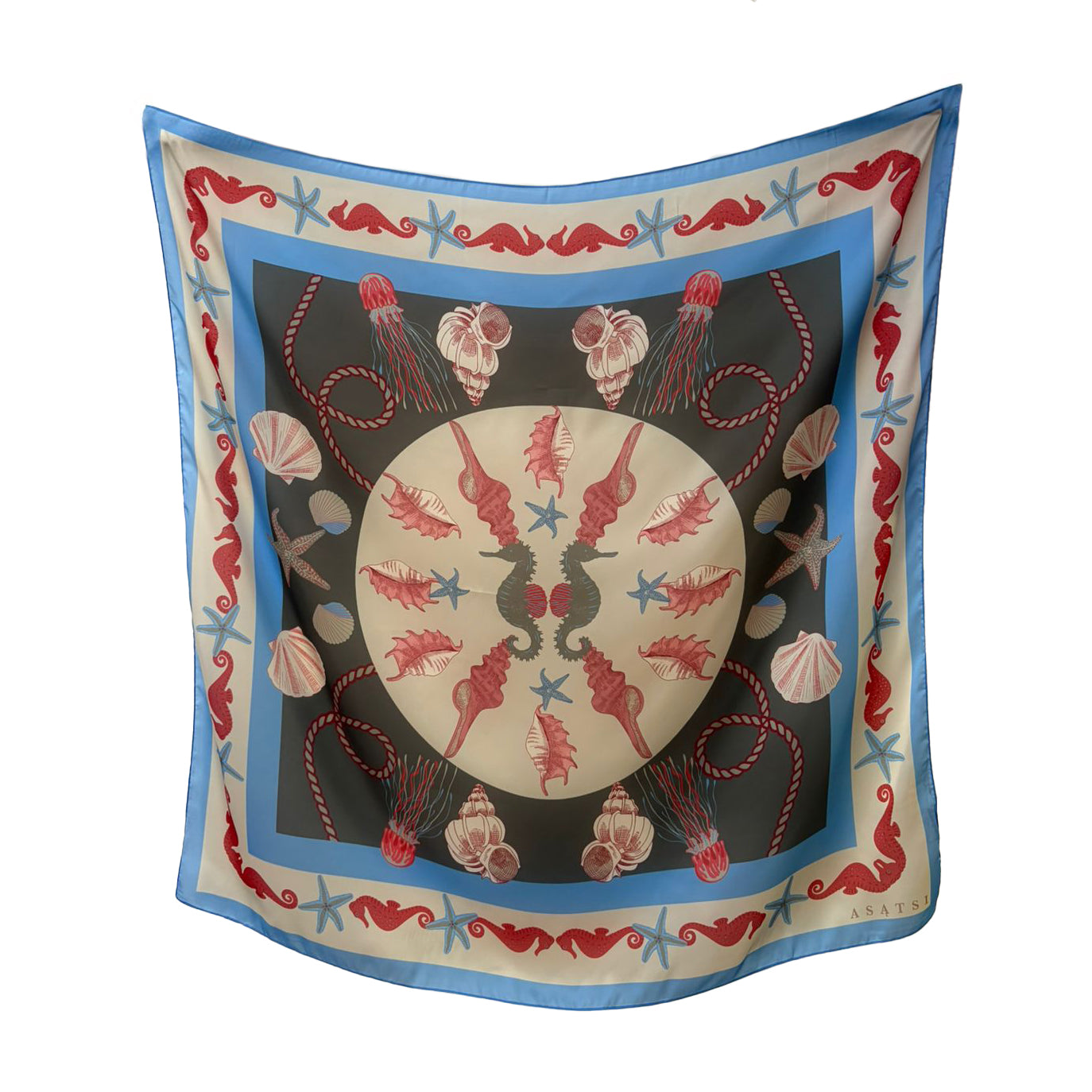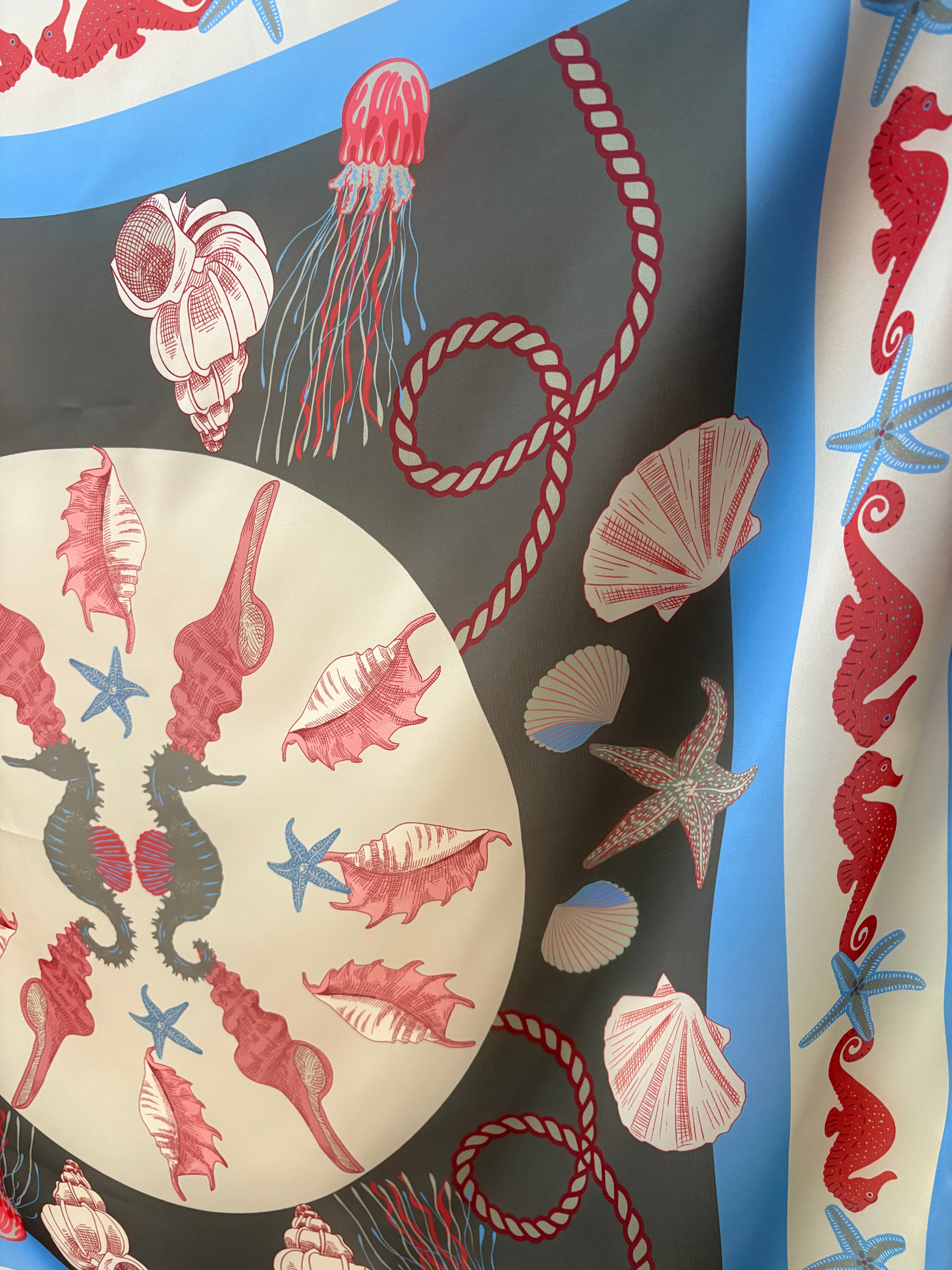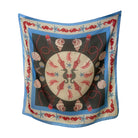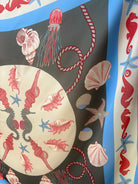The Oceana Scarf
Couldn't load pickup availability
The Last Song of the Knysna Seahorse
A Folktale from the Waters of South Africa
Long ago, when the world was still dreaming itself awake, the ocean and the land held hands in a quiet place now called Knysna. There, where the lagoon whispers to the sea, lived the tiniest of sea creatures — shy and delicate — with curved tails and eyes like tiny beads of glass.
These were the Knysna seahorses, and they were not like any others in the world. Their bodies shimmered like pearl dust in sunlight, and their hearts beat in rhythm with the tides. Unlike the loud, boastful fish of the deeper oceans, the Knysna seahorses spoke only in songs — soft songs that could only be heard when the water was still and the moon was listening.
The old people of the coast said the seahorses were not just animals — they were keepers of the lagoon’s memory. Every ripple, every lost shell, every sigh of a drowned sailor — the seahorses remembered it all. And as long as they sang, the water stayed calm and the fish returned year after year to lay their eggs.
Among the seahorses was one called Luna, the smallest of them all. Her body was pale green like the reeds, and though she was quiet, her song was the most beautiful. When Luna sang, the water glowed faintly, and the oysters opened their shells to listen.
But as time passed, the lagoon began to change.
Boats with engines louder than thunder tore across the water. People built houses too close to the edge, and waste began to flow into the reeds. The sea grasses, where the seahorses clung with their tails, began to die. And one by one, the seahorses disappeared.
Luna swam through the murky waters, searching for her family, singing her song alone. But no one answered. Her song grew quieter. The lagoon was forgetting.
Then, one evening, as the sun fell behind the Outeniqua Mountains and painted the sky in soft fire, a child named Amari came walking along the edge of the water. Amari had always heard tales from her grandmother — stories of a magical creature no longer seen, that once sang the lagoon to sleep.
As Amari stepped into the shallows, she heard something — faint as a breeze, sweet as a lullaby.
She knelt, and there, clinging to a single strand of sea grass, was Luna — the last Knysna seahorse.
Luna looked up at the child with her shining eyes, and her tail curled tightly around the reed.
Amari didn’t speak. She just listened. And when Luna’s song ended, the child whispered,
“I hear you. I won’t forget.”
From that day on, Amari visited the lagoon every morning. She told people of what she had seen. At first, they laughed. But her voice, like Luna’s, carried something soft and true. Soon, the people began to care again.
They cleaned the waters. They protected the sea grass beds. They slowed their boats. And over time, the lagoon began to heal.
It is said that if you walk quietly by the water’s edge near Knysna, when the moon is full and the reeds sway just so, you may still hear Luna’s song — and perhaps see a flicker of pearl in the shallows.
For though small and shy, the seahorse remembers. And those who listen will always find the song again.




